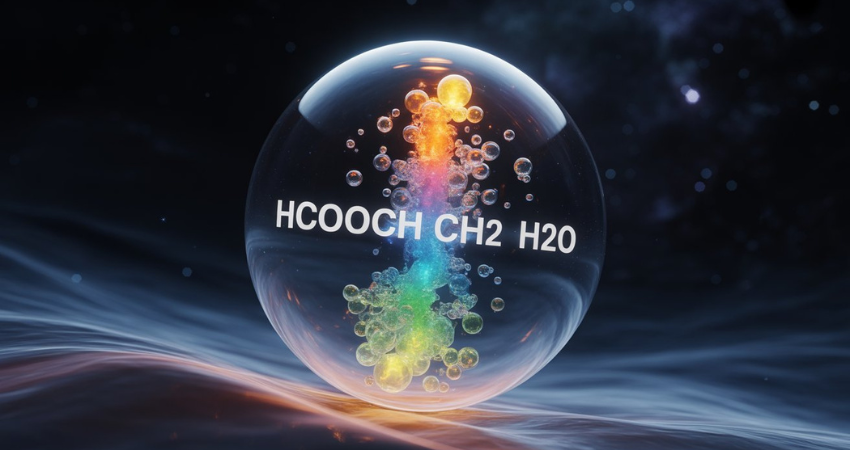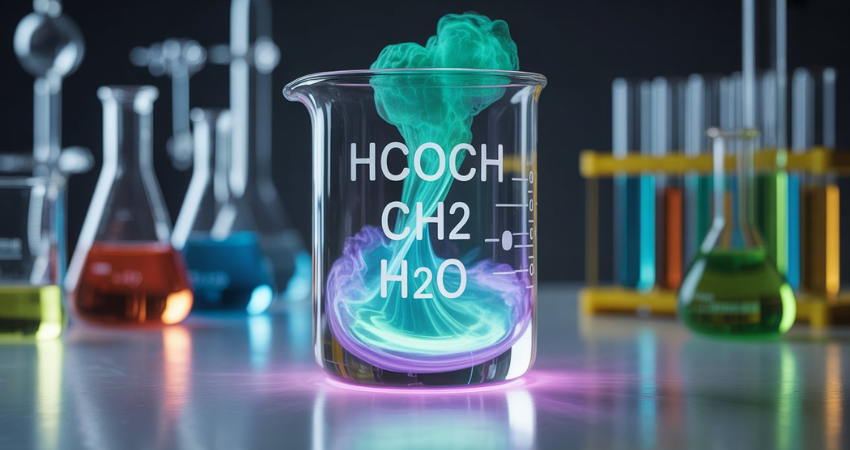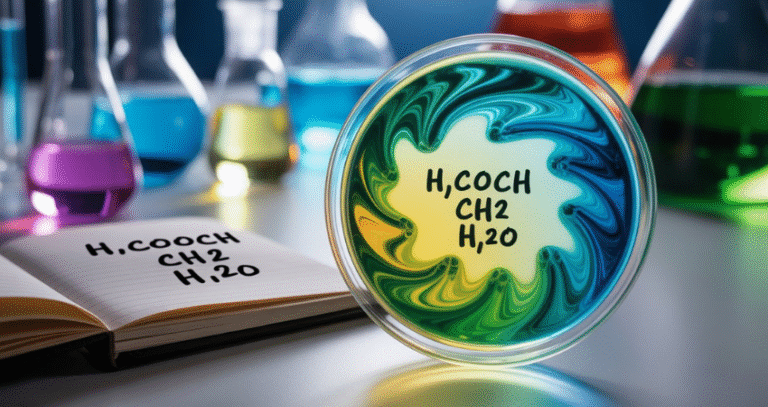Let’s be honest — when you first read “hcooch ch2 h2o,” you probably didn’t feel any emotional spark. But give it a minute. These aren’t just random letters and numbers thrown together. They’re the keys to understanding a fascinating corner of chemistry hcooch ch2 h2o that touches everything from perfumes to plastics to the water you drink.
In this deep dive, we’ll break down what each of these molecules means, how they behave, how they interact, and most importantly, how they impact the real world.
Understanding Each Compound
What is HCOOCH? (Methyl Formate)
Hcooch ch2 h2o stands for methyl formate, a colorless liquid with a fruity odor — yes, it literally smells like apples. It’s an ester, formed from formic acid (HCOOH) and methanol (CH₃OH).
-
Molecular formula: C2H4O2
-
Structure: HCOOCH₃
-
Uses: Solvent, fragrance base, blowing agent in foams
It’s volatile, flammable, and widely used in both industry and lab settings.
What is CH₂? (Methylene Group)
CH₂ is not exactly a molecule — it’s a functional group. Think of it like a Lego block in a huge chemical structure. You’ll see it as part of:
-
Alkanes
-
Alkenes
-
Polymers
It can act as a radical or bridge in larger chains. For example, in plastics like polyethylene, CH₂ units stack up like beads on a necklace.
What is H₂O? (Water)
Ah, water — the most familiar molecule on Earth. It’s made up of two hydrogen atoms and one oxygen atom. But beneath its simplicity lies incredible chemistry:
-
Polarity: The molecule has a positive and negative end
-
Hydrogen bonding: Gives water its high boiling point
-
Solvent abilities: Dissolves more substances than any other liquid

Chemical Properties
Methyl Formate
-
Boiling Point: 32 °C
-
Solubility: Slightly soluble in water
-
Odor: Pleasant, fruity
-
Reactivity: Reacts with bases, acids, and water
CH₂
-
Exists as radical (•CH₂) or double-bonded groups (CH₂=CH₂)
-
Highly reactive in radical form
-
Important in chain-growth polymerization
Water
-
High heat capacity
-
Universal solvent
-
Involved in hydrolysis, condensation, and redox reactions
Reactions Between These Molecules
Methyl Formate + Water = Hydrolysis
When HCOOCH meets H₂O, especially in the presence of acid or base, it undergoes hydrolysis:
HCOOCH₃ + H₂O → HCOOH + CH₃OH
That’s right — it breaks down into formic acid and methanol. This is a classic ester hydrolysis reaction, common in organic labs and industries.
CH₂ in Reactions
As a methylene radical (•CH₂), this group plays a huge role in free radical chain reactions. You’ll often see it in:
-
Polymer formation
-
Combustion chemistry
-
Organic synthesis
Industrial Applications
Methyl Formate
Used as:
-
Solvent in coatings and adhesives
-
Blowing agent in foam production
-
Fragrance base due to its pleasant smell
CH₂ in Plastics
Methylene groups are the backbone of polyethylene, the most widely produced plastic. The formula:
nCH₂=CH₂ → [-CH₂-CH₂-]ₙ
Simple, elegant, and found in everything from grocery bags to toys.
Water as a Reaction Medium
Water is more than just something you drink. In chemical processes, it acts as:
-
Solvent
-
Reactant in hydrolysis
-
Coolant in exothermic reactions

Environmental and Safety Concerns
Methyl Formate
-
Flammable
-
Toxic in large quantities
-
Should be handled in ventilated spaces
CH₂ and Atmospheric Effects
Free CH₂ radicals are rare but dangerous. They can:
-
Participate in ozone-depleting reactions
-
Create harmful byproducts
Water Pollution
While water is harmless, its contamination by chemicals like HCOOCH or plastic residues is a major global concern.
Real-Life Applications
-
Perfumes use methyl formate for fruity notes
-
Plastic bags are made using CH₂ polymer chains
-
Hydrolysis reactions in pharmaceuticals depend on water
You see? These little molecules are all around you.
Conclusion
From fruity esters to plastic bridges and life-giving water — hcooch ch2 h2o are more than just chemistry homework. They represent the incredible intricacy and importance of molecules that shape our daily lives.
Understanding how they behave, react, and contribute to the world helps us appreciate both the beauty and responsibility that comes with modern chemistry.
FAQs
1. What happens when methyl formate reacts with water?
It undergoes hydrolysis, producing methanol and formic acid.
2. Is CH₂ stable or reactive?
In radical form (•CH₂), it’s extremely reactive and usually short-lived.
3. Can HCOOCH be used in perfumes?
Yes, due to its pleasant fruity odor, it’s used in fragrance formulas.
4. How dangerous is methyl formate?
It’s flammable and can be toxic in large doses, requiring careful handling.
5. How is water involved in organic synthesis?
Water can act as a solvent, reactant (in hydrolysis), or catalyst in various reactions.
